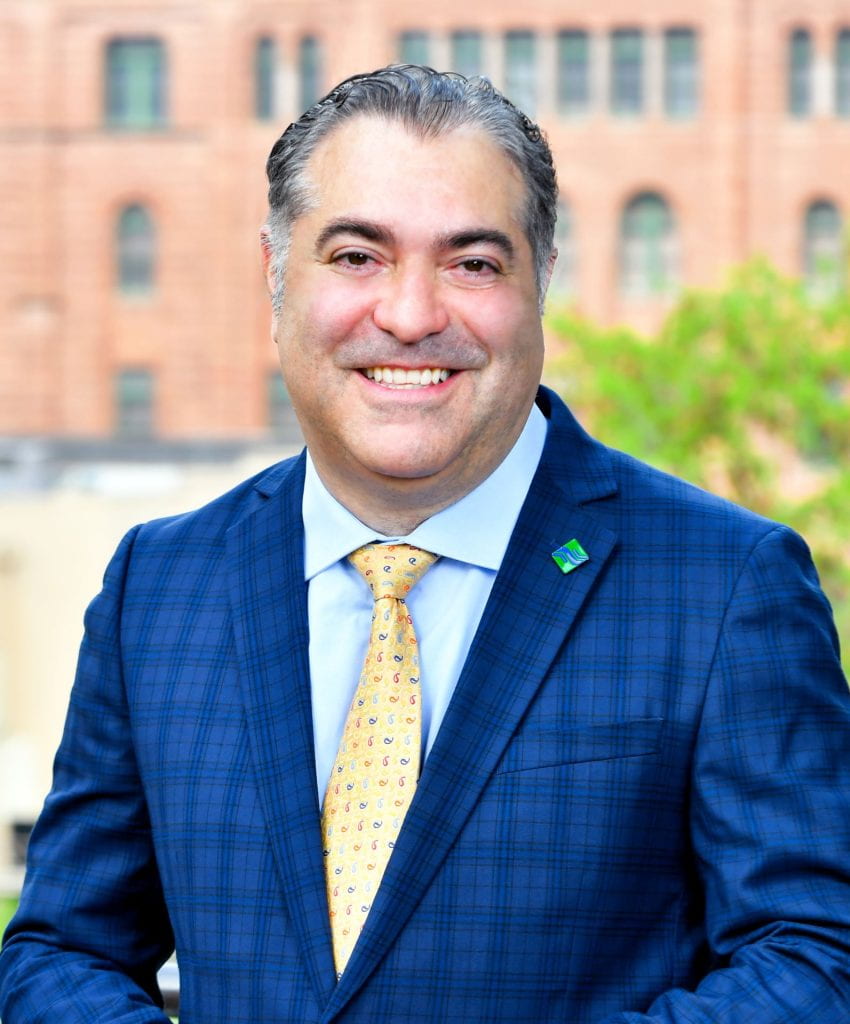In this issue’s Q&A, Texas+Water Editor-in-Chief, Dr. Todd Votteler, interviews Calixto Mateos-Hanel, Managing Director of the North American Development Bank (NADBank).
Prior to joining NADBank, Mateos-Hanel gained more than 25 years of experience at the Mexican Central Bank (Banco de México), where he held various positions from 1988 to 2014, including Economics Researcher, Deputy Macro-Financial Programming Manager, Deputy Project Manager, Macroeconomic Analysis Manager, Strategic Planning Project Manager, and Risk Manager. His last position with the Central Bank was as Director of Institutional Liaisons.
Mateos-Hanel has been a Professor of Economics at the Graduate School of Business Administration at the Tecnológico de Monterrey, teaching courses on macroeconomics, monetary theory and policy, and financial economics. He has also participated in international and national seminars hosted by financial institutions, such as the Inter-American Development Bank, the Bank of International Settlements, the World Bank, and the International Monetary Fund as well as other central banks in England, Germany, France, Spain, Italy, Canada, Guatemala, Colombia, and Brazil. In addition, he has published several articles in books and specialized magazines on topics such as monetary and fiscal policy.
Why was the NADBank created, and what is its mission?
The U.S. and Mexican Governments had the foresight to create NADBank, recognizing that the North American Free Trade Agreement would attract industry as well as a population explosion to support industry along the U.S.-Mexico border in the 1990s. The governments wanted a bi-national institution that would focus on helping communities to have clean air, land, and water. The mission of the Bank is to develop and finance environmental infrastructure on both sides of the border while improving the quality of life for its residents.
What are some of the unique water challenges facing the border that the NADBank is working to address?
The current climate changes that we are experiencing, including droughts and floods, are very unique challenges, which is one of the major reasons that the Bank is now laser-focused on sustainable development to try to maximize the useful life and efficiency of water infrastructure.
Another serious challenge is assisting communities in developing investment strategies to fund their capital improvement plans to modernize their current water infrastructure.
What are some of NADBank’s accomplishments and projects that you are most proud of?
I’m most proud that the Bank has funded projects that have improved the lives of more than 18 million U.S.-Mexico Border residents.
Recently, the U.S. and Mexican governments saw fit to provide a capital increase, the first in the history of the Bank, which has allowed the NADBank to expand into a wider array of projects to finance, including water efficiency and conservation projects.
One of the projects I’m most proud of is the Arsenic Water Treatment Plant in Tornillo, El Paso County, Texas. This small colonia in El Paso County now has clean and safe drinking water. The Bank has overseen several projects like this one in colonias, where the human impact can be felt. For me, seeing the reaction of someone that gets clean drinking water for the first time is a memory that won’t fade anytime soon.
What are the greatest water challenges facing the U.S. and Mexico border region over the next 20 years?
Water availability and diversification of water sources are serious challenges that border communities will face over the next 20 years. Determining their course of action could help continue the explosive growth of the border region. We are working with several Texas communities that are exploring water recycling as well as desalination plants to help provide additional water sources for future use.
What efforts or initiatives has NADBank undertaken to combat climate change?
Over the last few years, the Bank’s strategic direction has been sharpened to focus on sustainable investments that help develop the border region while combating climate change and promoting a greener economy in coordination with public and private sector sponsors. With this in mind, NADBank continues to expand its operations with new initiatives that align with this strategy.
In June, our Board approved a green loan program designed to finance environmental sustainability for small, rural, and other borrowers with limited access to NADBank financing through loans to financial intermediaries. We believe that our new green loan program will help build a new market for the Bank, where access to financing for small-scale green projects is more challenging.
Also, throughout 2022, the Bank has moved forward in the expanded types of projects, with the approval of new projects in the air quality, renewable energy, sustainable food chains, and building sectors. The sustainable food chain and building sector projects are heavily focused on water efficiency during construction and operation as well as the water savings these projects will provide.
NADBank is a financial institution established and capitalized in equal parts by the United States and Mexico for the purpose of financing environmental infrastructure projects along their common border. As a pioneer institution in its field, the Bank is working to develop environmentally and financially sustainable projects with broad community support in a framework of close cooperation and coordination between Mexico and the United States.
Join Our Mailing List
Subscribe to Texas+Water and stay updated on the spectrum of Texas water issues including science, policy, and law.

